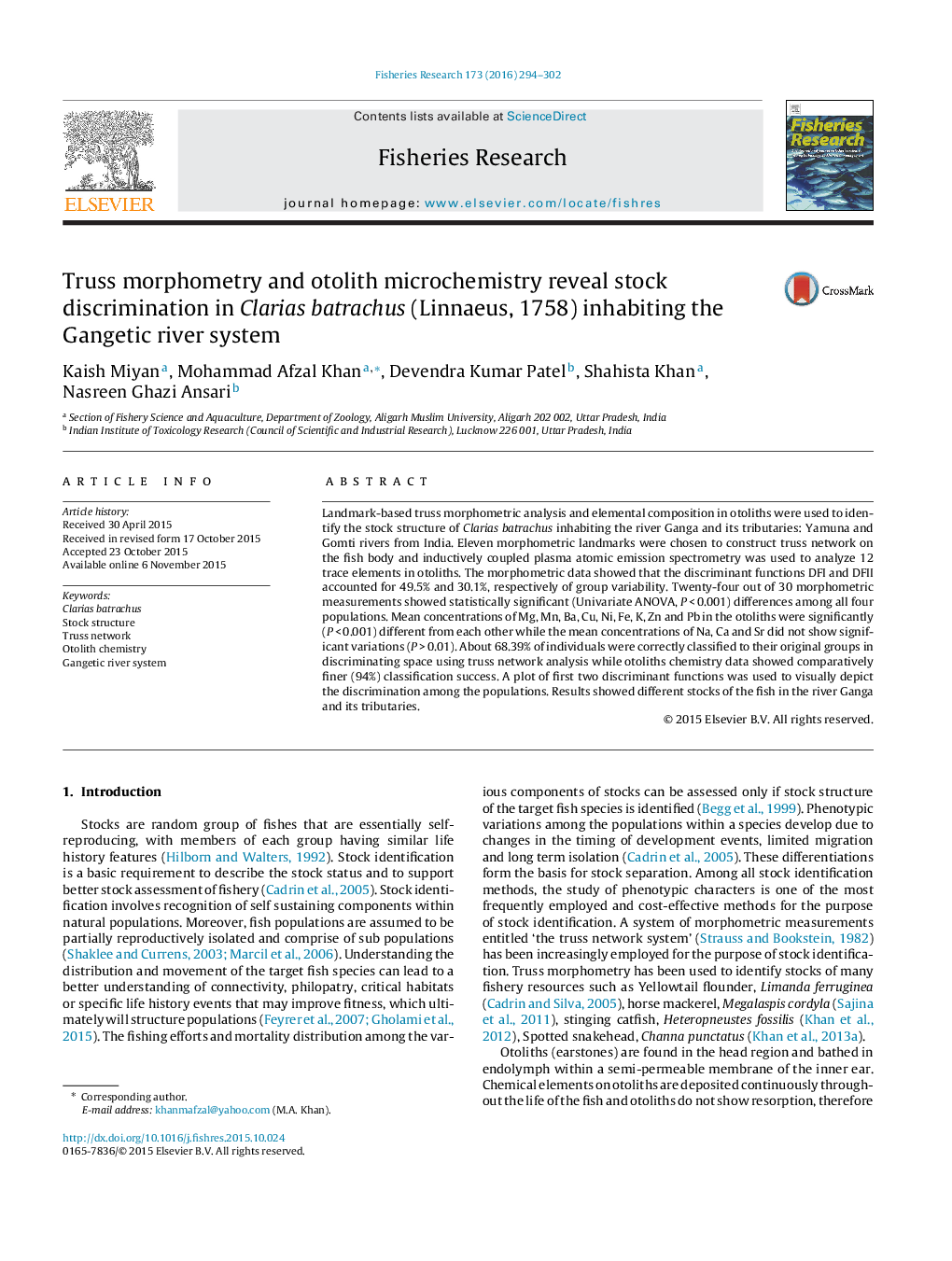| Article ID | Journal | Published Year | Pages | File Type |
|---|---|---|---|---|
| 6385321 | Fisheries Research | 2016 | 9 Pages |
Abstract
Landmark-based truss morphometric analysis and elemental composition in otoliths were used to identify the stock structure of Clarias batrachus inhabiting the river Ganga and its tributaries: Yamuna and Gomti rivers from India. Eleven morphometric landmarks were chosen to construct truss network on the fish body and inductively coupled plasma atomic emission spectrometry was used to analyze 12 trace elements in otoliths. The morphometric data showed that the discriminant functions DFI and DFII accounted for 49.5% and 30.1%, respectively of group variability. Twenty-four out of 30 morphometric measurements showed statistically significant (Univariate ANOVA, PÂ <Â 0.001) differences among all four populations. Mean concentrations of Mg, Mn, Ba, Cu, Ni, Fe, K, Zn and Pb in the otoliths were significantly (PÂ <Â 0.001) different from each other while the mean concentrations of Na, Ca and Sr did not show significant variations (PÂ >Â 0.01). About 68.39% of individuals were correctly classified to their original groups in discriminating space using truss network analysis while otoliths chemistry data showed comparatively finer (94%) classification success. A plot of first two discriminant functions was used to visually depict the discrimination among the populations. Results showed different stocks of the fish in the river Ganga and its tributaries.
Related Topics
Life Sciences
Agricultural and Biological Sciences
Aquatic Science
Authors
Kaish Miyan, Mohammad Afzal Khan, Devendra Kumar Patel, Shahista Khan, Nasreen Ghazi Ansari,
